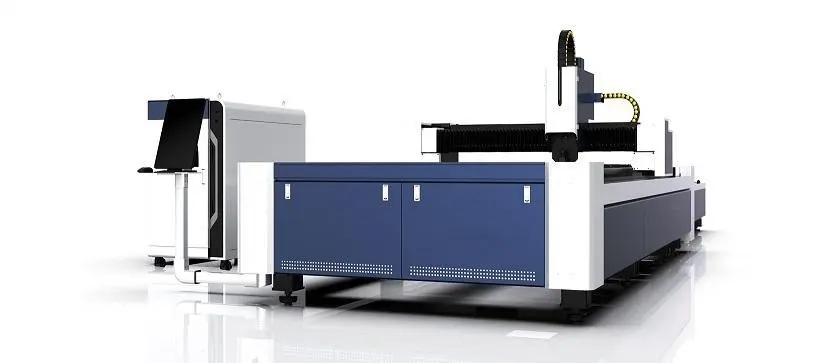Why Does Laser-Cut Acrylic Emit That Strong Odor? A Pungent Scent or Something Harmful?
Acrylic, commonly known as Perspex or Plexiglas, is a popular material for laser cutting due to its versatility, durability, and aesthetic appeal. However, one common concern among DIY enthusiasts and professionals alike is the strong odor emitted during the laser cutting process. This pungent scent can sometimes raise questions about its potential harmful effects. In this article, we will explore the reasons behind the odor and address any concerns regarding its safety.
The Chemistry Behind the Odor
The strong odor emitted during laser cutting of acrylic is primarily caused by the process of thermal degradation. Acrylic is a thermoplastic polymer made of polymethyl methacrylate (PMMA) or polyacrylate, which consists of large chains of repeating molecular units. When exposed to high temperatures generated by the laser, these polymer chains break down, releasing volatile organic compounds (VOCs) into the air.
VOCs are chemicals that easily vaporize at room temperature, and their distinct smell is often described as sweet or fruity. The exact composition of VOCs emitted during laser cutting can vary depending on the specific type and quality of acrylic, as well as the cutting parameters and laser power used.
It’s important to note that, in most cases, the strong odor associated with laser-cut acrylic is not an indication of toxicity. The VOCs released during the process are generally low in concentration and considered safe for short-term exposure. However, certain precautions should still be taken, especially in enclosed or poorly ventilated spaces.
Health and Safety Considerations
While the odor emitted during laser cutting of acrylic is generally not harmful, it is recommended to take some precautions to ensure a safe working environment:
1. Adequate Ventilation
Ensure proper ventilation by working in a well-ventilated area or using local exhaust systems such as fume extractors. The aim is to prevent the accumulation of VOCs, smoke, and particulate matter in the air, reducing the risk of respiratory irritation or other health issues.
2. Personal Protective Equipment (PPE)
Wear appropriate PPE such as safety goggles, gloves, and a respiratory mask, especially if working in an enclosed space or for extended periods. This will provide an additional layer of protection against any potential irritation or sensitization caused by inhaling the emitted fumes.
3. Material Quality
The quality and composition of the acrylic being laser cut can also affect the odor emitted. Opting for high-quality acrylic with fewer impurities or additives can help minimize any potential noxious fumes.
4. Time and Exposure
Limit the duration of exposure during laser cutting, take breaks, and allow fresh air circulation to minimize the concentration of VOCs in the working environment. This is particularly important when working on larger projects that require prolonged cutting times.
Frequently Asked Questions (FAQs)
Q: Does the odor from laser-cut acrylic indicate the presence of harmful chemicals?
A: The odor emitted during laser cutting of acrylic is primarily due to volatile organic compounds (VOCs) released during the thermal degradation of the polymer. While the smell can be strong, it does not necessarily indicate the presence of harmful chemicals that pose significant health risks. However, it is still important to ensure proper ventilation and take necessary precautions to minimize exposure.
Q: Can the odor from laser-cut acrylic cause health problems?
A: The odor from laser-cut acrylic is generally not harmful when short-term exposure occurs in a well-ventilated space. However, prolonged exposure or working in enclosed environments without proper ventilation may lead to respiratory irritation or other health concerns. It is recommended to work in well-ventilated areas and wear appropriate personal protective equipment.
Q: Can I eliminate the strong odor from laser-cut acrylic?
A: While it is challenging to completely eliminate the odor from laser-cut acrylic, there are steps you can take to minimize it. These include working in a well-ventilated area, optimizing cutting parameters to reduce thermal stress on the material, and using high-quality acrylic with fewer impurities.
Q: Are there any alternatives to acrylic that emit less odor during laser cutting?
A: Acrylic emits a characteristic odor when laser cut due to its chemical composition and thermal degradation process. However, some alternative materials such as wood, leather, or certain types of plastics may produce less noticeable odors during laser cutting. It is advisable to consider the specific requirements of your project and explore different material options.
Q: Can I use an air purifier or filter to remove the odor from laser-cut acrylic?
A: While an air purifier or filter can help improve air quality in general, it may not completely eliminate the odor from laser-cut acrylic. These devices are helpful in reducing particulate matter and various odors but may not be specifically designed to remove the volatile organic compounds (VOCs) released during laser cutting. It is still recommended to prioritize proper ventilation and other precautionary measures.
In conclusion, the strong odor emitted during laser cutting of acrylic stems from the thermal degradation of the polymer chains, releasing volatile organic compounds (VOCs) into the air. While the odor itself is generally not harmful when proper precautions are taken, it is crucial to maintain adequate ventilation, wear appropriate personal protective equipment, and limit exposure to ensure a safe working environment.





